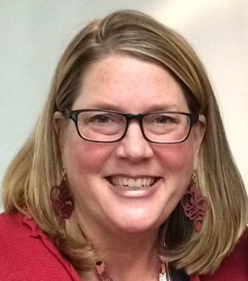Tips for Successful Board Meetings

Timi Tullis, AASB Associate Executive Director
Do you feel as a school board member you are doing one of three things: preparing for, attending, or following up on a meeting? Board members dedicate a lot of their time to meetings. You have meetings for decision-making, problem solving, planning and evaluating!
Our recommended Board Bylaw on meetings states:
“Meetings of the Board are conducted for the purpose of accomplishing district business. A meeting of the Board shall consist of any gathering of the members of the Board when more than three members of the Board, or a majority of the members, whichever is less, are present and collectively consider a matter upon which the Board is empowered to act. As a matter of district policy and state law, meetings ordinarily shall be open to the public. The Board may meet in closed sessions only to discuss certain matters as permitted or required by Alaska’s Open Meetings Act.”
If you or your board are struggling with your meeting, here are a few tips to improve upon your meeting.
1. It is vitally important for boards to adopt a yearly calendar with dates and times for their regularly scheduled meetings, the earlier in the year the better. If you plan the year out then it makes it easier for everyone to schedule their lives. It also helps to add your board retreat to do your self assessment as well as annual events you want to ensure are scheduled.
2. Ensure the entire board is aware of the importance of doing their homework before the meeting and come prepared for discussion.
3. Be sure to post all meetings so the public is notified. Each regular meeting should be posted five days prior to the meeting. It’s also important to post work sessions or board retreats. Make sure you post when folks from the board team will be going to trainings together, even when it is out of town. Though the open meetings act does not specify five days to post a meeting, the law does require “reasonable notice.” For consistency, post your meetings in the same manner and same place EVERY time.
4. If any board members call into the meeting make sure all votes are taken by roll call.
5. Carefully watch the number of times your board goes into executive session. Remember, there are only four subjects a board may discuss in an executive session. they are:
- matters, the immediate knowledge of which would clearly have an adverse effect upon the finances of the school district;
- subjects that tend to prejudice the reputation and character of any person, provided the person may request a public discussion;
- matters which by law, municipal charter, or ordinance are required to be confidential; or
- matters involving consideration of government records that by law are not subject to public disclosure.
Remember the Board may not take action in an executive session, except to give direction to an attorney or labor negotiator regarding the handling of a specific legal matter or pending labor negotiations. All other action of the Board must be made in a regular open meeting.
6. The chair should help move the meeting along, and while allowing for all individuals to talk, must ensure they keep the group on track by limiting aimless discussions. There is a fine balance between focused discussions and ‘bird walking.’
7. Ensure the room is arranged so all members can see each other, as well as the superintendent, while also allowing the audience to view the work of the board.
8. The chair needs to make sure the discussion is focused on the issues on the agenda, and other issues are NOT discussed, but rather added to a list for possible addition to future agendas.
9. “Is it good for kids?” Ask yourself this question as each vote is called! Stay focused on students. A school board’s function is to take care of the needs of students – not adults. When boards begin focusing on adults and their problems, the needs of students quickly get lost and everyone’s attention turns to adults and their issues.
10. An effective board uses Parliamentary Procedure to ensure all voices at the table are heard, so be sure it is used to keep the meeting orderly. At least one person at the table should be versed in the Robert’s Rules
11. Remember it is a school board meeting held in public, NOT a meeting for the public to take over. Though you want to make sure you include the voice of the audience make sure it is done as your policies state. A spirit of mutual respect and teamwork should be demonstrated by all involved.
12. Lastly, all the work you do will be viewed by those in attendance. You send a loud and clear message to your community by the way you interact at the board table. Be respectful of each other and the administration. Ask yourselves at the end of the meeting: “ Was a spirit of mutual respect and teamwork demonstrated by all involved?”
